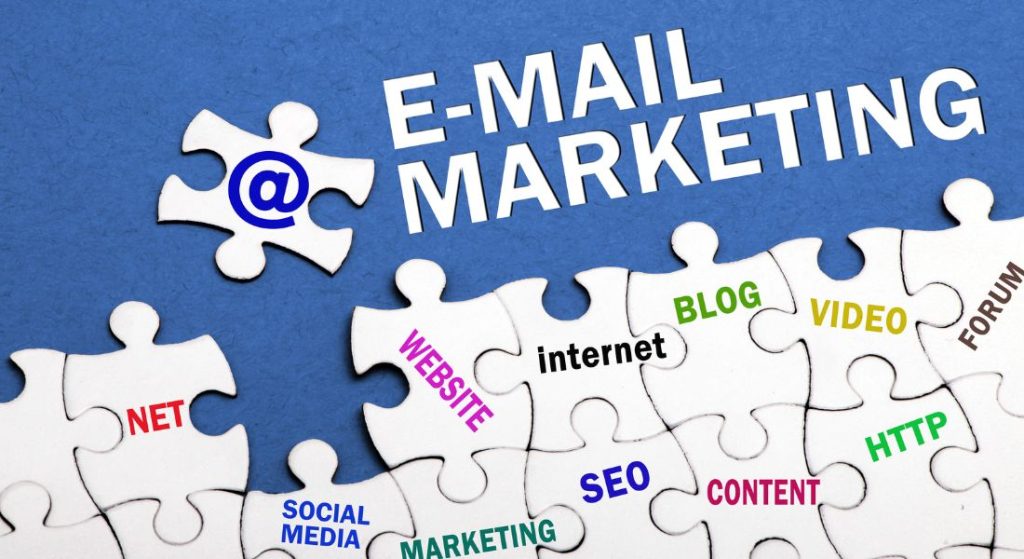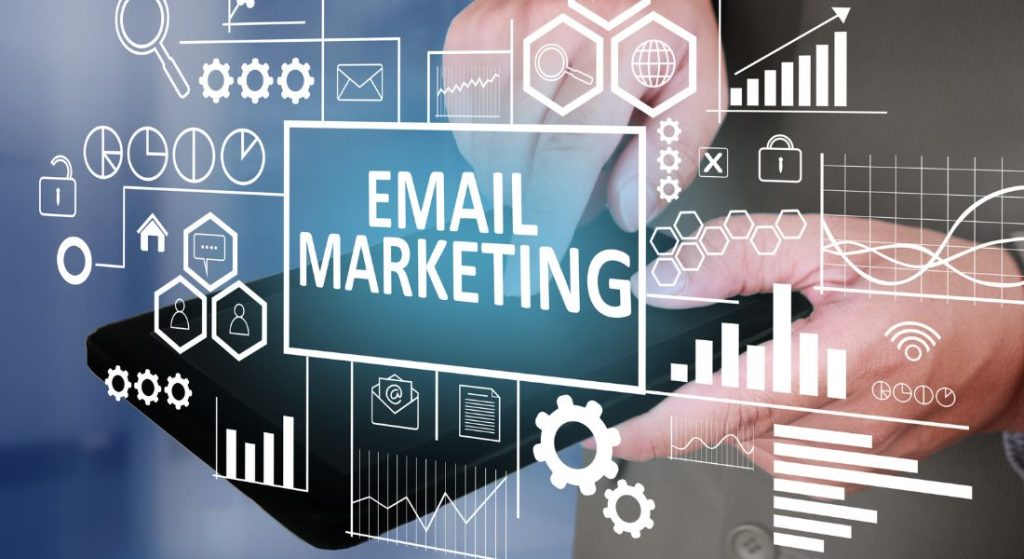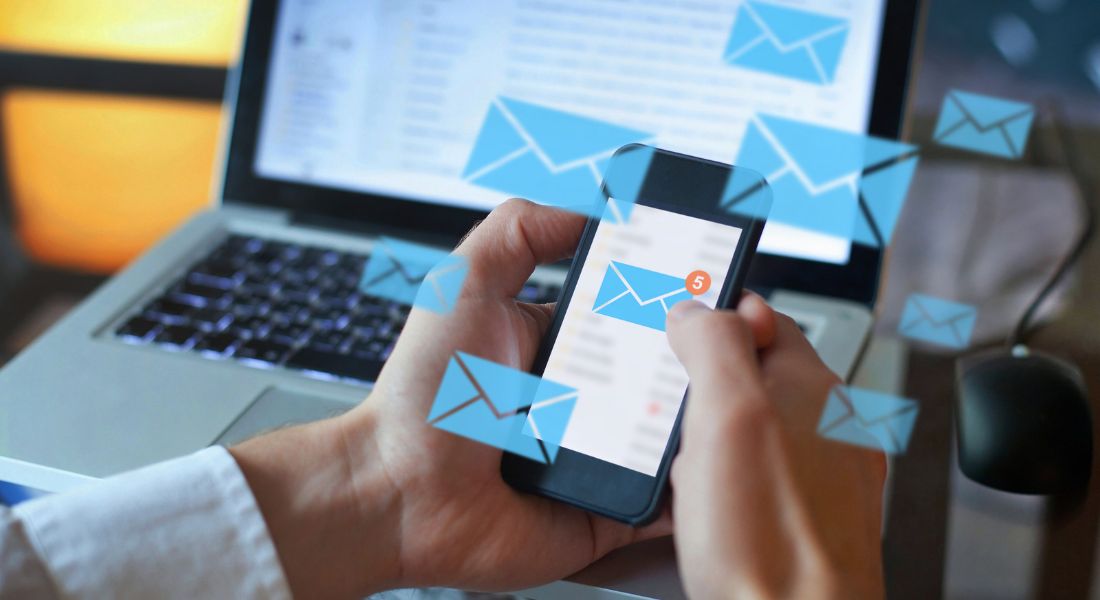Imagine launching a simple yet powerful tool that generates skyrocketing sales, builds your brand’s awareness, and consistently nurtures customer relationships – all with minimal effort! Intrigued? That’s the power of email marketing at your fingertips. As you dive into “The Ultimate Beginner’s Guide to Email Marketing,” prepare yourself for an eye-opening journey towards unearthing the secret formula that will unlock unlimited opportunities for your company. Are you ready to accelerate your success?
Our email marketing beginner’s guide provides a step-by-step overview of how to create successful email campaigns, including creating compelling content with attention-grabbing images, preparing your contact lists, choosing an email platform, and measuring success. This comprehensive guide is designed for those new to email marketing and offers practical tips and advice to help you achieve maximum impact in your email marketing efforts.
Post Contents
ToggleBasics of Email Marketing for Beginners
Email marketing is a type of digital marketing that utilises email to communicate with customers and prospects. It is one of the most effective ways to reach out to potential customers in a cost-efficient way and has become an essential component of any digital marketing campaign. In fact, a well-executed campaign can lead to a lot of new leads flooding your inbox.
One of the biggest advantages of email marketing is its personalization capabilities. With email marketing, you can tailor each message and provide unique content that resonates with your audience. Furthermore, email marketing has proven to be particularly useful for building relationships with customers over time, transforming a one-time interaction into something more substantial.
This value proposition isn’t just based on assumptions or conjecture – there are some impressive statistics that back it up. Take, for example, ROI (return on investment) – email marketing boasts one of the highest ROIs in the digital marketing arena. The DMA’s National Client Email Report from 2019 reported a whopping £42 return for every £1 spent on email marketing in the UK.
To put things into perspective: imagine someone walking along the high-street handing out flyers by hand to every passer-by but not really knowing who the person is or what they need. That would be comparable to a poorly executed email campaign that doesn’t have a defined target audience or failed attempts at personalisation.
So now you know what makes email such an impactful thing. How do we get started harnessing its power? It all starts with building your subscribers’ list.
Building Your Subscribers List
The first step in launching a successful email campaign is to establish a list of subscribers who are interested in your products, services or organisation. There are many different ways to create this list depending on your business model and digital assets.
You can add an opt-in form to your website which allows visitors to subscribe directly, or include a call-to-action button on your social media pages encouraging users to sign up. You can even offer incentives such as discounts or exclusive offers for subscription.
Once you have established a subscriber base, be sure to focus on regular engagement. Keep your subscribers interested in your brand and the services it provides by including them in updates and special promotions through weekly or monthly newsletters, event invitations, and important announcements.
Remember that building an email list takes time and patience, as well as a focus on genuine interaction with your subscribers. This is the reason why it’s essential not just to grow your list too quickly, but to put effective elements in place for organic growth of an engaged audience, which will happen naturally and more effectively than a hastily amassed list of uninterested subscribers.
For example, suppose you run an independent coffee shop with a loyal following, built on an excellent product offering and exceptional customer service. To nurture this customer relationship further, consider sending occasional updates about new coffee options, upcoming events, or simply engaging via surveys or feedback forms. This information-sharing process will help keep your customer base informed and invested in your business, increasing the chances of future purchases and generating better results.

Defining Your Goals and Strategy
Before you start sending emails, it’s important to establish your email marketing goals and strategy. Defining your goals will help you stay focused and determine the metrics you need to measure your success. Your email marketing strategy will guide you in steps for making decisions about how to achieve those goals and optimise conversions.
For example, if your goal is to increase sales, your email marketing strategy should focus on creating campaigns that feature product promotions, discounts, or upsells. By contrast, if your goal is building brand awareness, your strategy may include storytelling campaigns or educational content related to the industry.
To create an effective email marketing strategy, take some time to consider who your target audience is and what kind of messages they would like to receive. Think about the key benefits of your products or services as a basis for creating engaging content that resonates with your subscribers and provides a link between your brand and their interests.
It’s important to remember that not all email campaigns will be successful. Be prepared to test and adjust your strategies as needed until you find the approach that works best for you. Some businesses may find success with sending weekly newsletters while others may need to send more targeted campaigns based on subscriber behaviour.
Once you have established your goals and developed a solid email marketing strategy, it’s time to start crafting engaging content following the appropriate steps.
- According to Statista, in 2023, the number of global email users is expected to reach 4.4 billion, highlighting the vast potential audience for email marketing campaigns.
- A study by Campaign Monitor found that segmented email campaigns show an average increase of 760% in revenue compared to non-segmented campaigns.
- HubSpot reports that personalised subject lines can lead to a 50% higher open rate for email marketing campaigns.
Crafting Engaging Content
Creating engaging content is key to the success of an email campaign. You want to capture the reader’s attention and keep them engaged from the subject line all the way through to the call-to-action (CTA).
One way to engage readers is through personalization. This can include addressing recipients by name or sending them content tailored specifically to their interests based on their past behaviours or preferences. For instance, a clothing retailer could send customers personalised product recommendations based on their browsing history.
An effective email marketing campaign should also aim to provide value to subscribers. This can be through exclusive promotions, entertaining or informative content, or other benefits that are unique to your brand. By providing value in your emails, you build trust and create loyal customers.
Think of every email as an opportunity to create a relationship with your subscribers rather than just making a sale. Just like how you wouldn’t go on a first date and immediately ask for marriage, don’t ask for too much from your subscribers too soon.Instead, focus on building a connection and then gradually introduce them to a variety of new products or services, no matter the types of consumers they are. In fact, effective marketing channels and consistent contacts are crucial to everything from attracting new customers to retaining loyal ones.
Crafting engaging content is important, but understanding the importance of personalization and automation in an email campaign can make it even more successful.
Personalization and Targeting
Personalization and targeting are two key factors that contribute to successful email marketing campaigns. Instead of sending generic emails to your subscribers, personalization allows you to tailor your messages based on their specific interests, behaviour, and characteristics. This gives your subscribers a more personalised experience and makes them feel valued as individuals.
For instance, let’s say you own a pet store and have both cat and dog owners subscribed to your email list. You can use personalization to send customised content to each segment based on their preferences. You could offer promotions for cat food to cat owners, while dog owners receive promotions for dog toys.
By personalising your emails, you also increase the chances of your subscribers engaging with your content and taking action. According to a study by Campaign Monitor, emails with personalised subject lines are 26% more likely to be opened. In addition, research shows that targeted emails can lead to a 760% increase in revenue.
Some people may argue that personalising emails takes too much time and resources. However, with the help of email marketing platforms like Contact Fusion, you can easily create automated campaigns that use subscriber data to send personalised messages without spending extra time or effort.
Think of it like going to a restaurant – if the waiter knows your name and remembers your favourite dish, you are more likely to have an enjoyable experience and keep coming back. The same goes for email marketing; when you personalise your messages, you create a more memorable experience for your subscribers.

Email Campaign Automation
Email campaign automation is the process of creating automated email sequences based on specific triggers or actions taken by your subscribers. This can save you time and resources while ensuring consistent communication with your audience.
Let’s say someone subscribed to your email list after downloading a free e-book from your website. With automation, you can set up an email sequence that delivers the e-book to them and then follows up with additional related content to keep them engaged.
Research shows that marketers who use automated emails see a 70.5% increase in open rates and a 152% increase in click-through rates. Automated campaigns also have higher revenue potential – they generate 320% more revenue than non-automated campaigns.
Some people may argue that automated emails lack the personal touch of manual messages. However, with dynamic content and personalization features, you can still create targeted and personalised messages that feel authentic and relevant to each individual subscriber.
Think of it like having a personal assistant – automation takes care of repetitive tasks so you can focus on other important aspects of your business, while still delivering timely and effective communication to your subscribers.
- Email campaign automation can be a game-changer for businesses as it saves time and resources while improving communication with your audience.
- By creating automated email sequences triggered by specific actions, you can deliver relevant content to your subscribers and keep them engaged, resulting in higher open and click-through rates and increased revenue potential.
- While some may worry about the lack of personal touch, personalization features make it possible to still create targeted messages that feel authentic to each individual subscriber.
- Think of automation as having a personal assistant that takes care of repetitive tasks while ensuring effective communication with your subscribers.
Essential Tools for Beginners
Email marketing can seem daunting at first, but with the right tools and resources, it can be a breeze.Here are some essential tools and best practices that beginners should consider using to help make their email campaigns successful while ensuring deliverability and avoiding spam.
First and foremost, having a reliable email service provider (ESP) is key. An ESP will help you manage your subscribers list, design and send emails, and track performance metrics. Some popular ESPs for beginners include Mailchimp, Constant Contact, and Sendinblue. Utilizing an ESP is a great way to improve optimization and prevent your emails from being marked as spam.
Another important tool that beginners should consider is a landing page builder. Landing pages are designed specifically to encourage visitors to take specific actions, like subscribing to your newsletter or purchasing a product. Tools like Leadpages, Unbounce, and Instapage make it easy to create effective landing pages without any coding experience or needing to build a site from scratch.
Think of landing pages as a storefront window display – they need to capture people’s attention and convince them to take action. With the right landing page builder tool, you can create an enticing display without needing to be an expert in web design.
In addition to traditional email marketing campaigns, many businesses are seeing success with automated workflows. These workflows allow you to set up triggers that automatically send specific emails based on subscriber behaviour – for example, sending a welcome series when someone first signs up. Popular automation tools include ActiveCampaign and Drip. Automated workflows are great examples of optimization in email marketing.
Now that we’ve covered some essential tools for beginners and discussed best practices, let’s turn our attention to some tips that will help ensure your email marketing campaigns are successful.

Essential Tips for Email Marketing Success
Crafting engaging content is just one part of successful email marketing campaigns – here are some essential tips to keep in mind as you build out your strategy:
The first tip is to make sure you’re segmenting your audience appropriately. Segmentation means dividing your subscribers list into smaller groups based on common characteristics, like interests or purchase history. This can help you tailor your emails to each group and increase engagement.
Another important tip is to make sure your emails are mobile-optimised. A majority of emails are now opened on mobile devices, so it’s essential that your emails look great on small screens. Consider using a responsive template or testing your emails on different devices to ensure they’re easy to read and navigate.
While tactics like urgency and scarcity can be effective in driving action, it’s important not to overuse them. Focusing too much on sales and promotions can lead to subscriber fatigue – instead, strive for a balance of valuable content and promotional messaging.
Finally, make sure you’re constantly testing and analysing your email campaigns. Testing different subject lines, send times, and content can help you identify what resonates best with your audience. Use data from tools like Google Analytics or your ESP’s reporting dashboard to see what’s working and what could use improvement.
Remember – successful email marketing takes time, effort, and experimentation. By following these tips, utilising the right tools, and adhering to best practices, you can build a strong foundation for long-term success in deliverability and avoiding spam.





